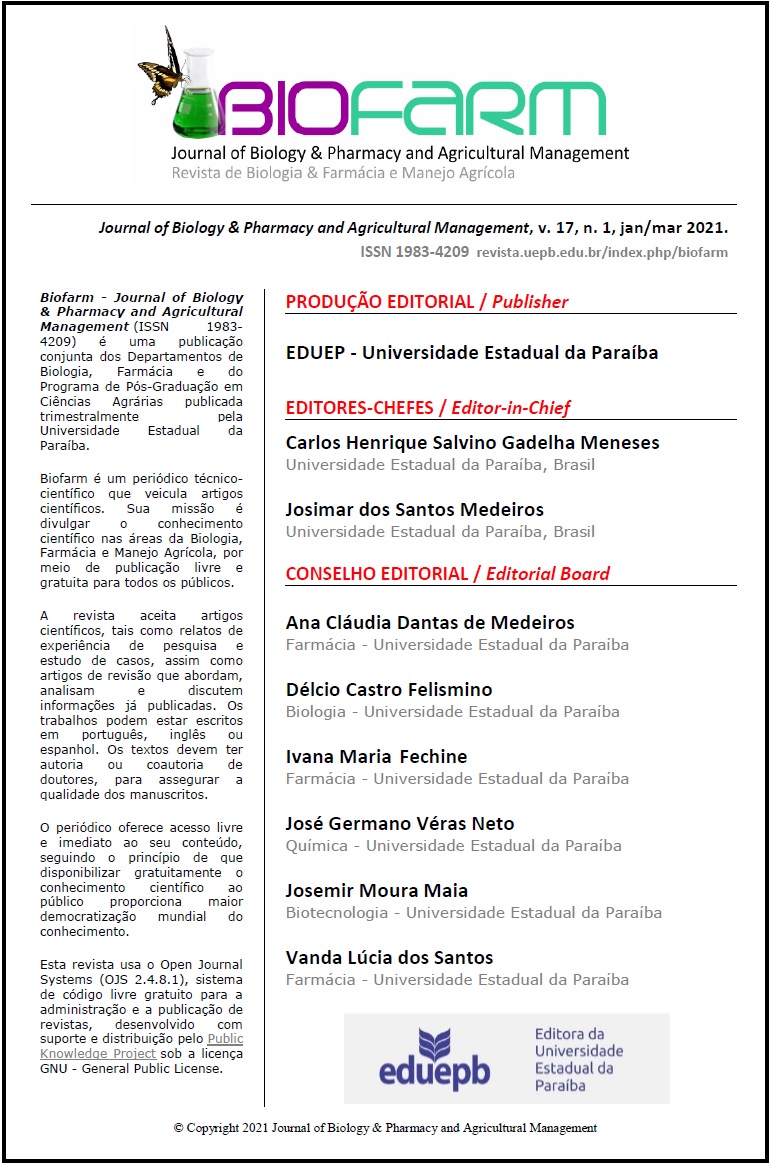EMULGEL BASEADO EM QUITOSANA CONTENDO EXTRATO DE PRÓPOLIS VERMELHA PARA TRATAMENTO DE INFECÇÕES VULVOVAGINAIS
Abstract
As abelhas coletam um produto natural resinoso a partir da planta Dalbergia ecastophyllum, uma espécie nativa de manguezais brasileiros do estado de Alagoas, que origina a própolis vermelha. Neste trabalho, prepararam-se diferentes extratos da própolis vermelha para desenvolver uma formulação tópica para tratamento de infecções vulvovaginais, como vaginoses bacterianas e candidíase. Ensaios de atividade antimicrobiana dos extratos frente aos microrganismos de referência Candida albicans ATCC 90028, Staphylococcus aureus ATCC 25923 e Escherichia coli ATCC 25922 indicaram que o extrato preparado em polietilenoglicol 400 apresentou notável atividade antimicrobiana contra C. albicans e S. aureus. Prepararam-se formulações com baixo teor de componentes oleosos, do tipo emulgel, com incorporação do extrato que apresentou maior atividade antimicrobiana. A mistura de uma emulsão não iônica com um hidrogel de quitosana de baixo peso molecular na proporção 1:1 p/p originou o emulgel. Caracterizaram-se as propriedades reológicas da emulsão, do gel de quitosana e do emulgel. A incorporação do extrato no emulgel contendo quitosana resultou em uma atividade antimicrobiana in vitro aumentada, como uma alternativa terapêutica viável baseada em produtos naturais para tratamento de infecções vulvovaginais. A realização de estudos clínicos ainda se faz necessária para caracterizar a segurança e eficácia destas formulações.
Downloads
Published
How to Cite
Issue
Section
License
Copyright (c) 2023 BIOFARM - Journal of Biology & Pharmacy and Agricultural Management

This work is licensed under a Creative Commons Attribution 4.0 International License.
Authors and co-authors retain copyright, but cede the right to first publication to the Journal of Biology & Pharmacy and Agricultural Management (BIOFARM).
Copyright encompasses exclusive rights to reproduce and deliver the article in all form and media, including reprints, photographs, microfilms and any other similar reproductions, as well as translations. The reproduction of any part of this journal, its storage in databases and its transmission by any form or media - such as electronic, electrostatic and mechanical copies, photocopies, recordings, magnetic media, etc. - will be allowed only with a written permission from the BIOFARM.
Articles published in BIOFARM will be Open-Access articles distributed under the terms and conditions of the Creative Commons Attribution License (CC BY). The copyright is retained by the author(s). BIOFARM will insert the following note at the end of the published text:
© 2023 by the authors; licensee BIOFARM, Campina Grande, Brazil. This article is an open access article distributed under the terms and conditions of the Creative Commons Attribution License (http://creativecommons.org/licenses/by/4.0/).


